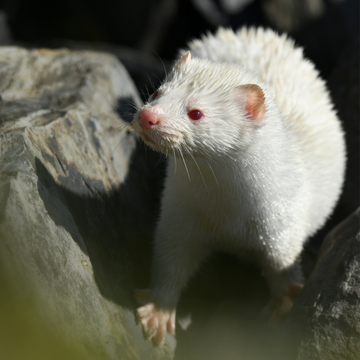The world of fashion is undergoing a vibrant transformation as sustainability takes center stage. Among the various aspects of eco-conscious fashion, the use of eco-friendly dyes has emerged as a colorful solution. This article delves into the realm of eco-friendly dyes, exploring how they are revolutionizing the fashion industry while minimizing environmental impact.
The Environmental Toll of Conventional Dyes
Conventional dyeing processes have long been associated with pollution, excessive water consumption, and harmful chemicals. Runoff from dyeing facilities can contaminate water sources and disrupt local ecosystems. As consumers demand greener practices, the fashion industry is turning to eco-friendly alternatives.
Embracing Nature's Palette: Eco-Friendly Dyes
Eco-friendly dyes utilize natural sources such as plants, minerals, and even waste materials to create beautiful hues. These dyes are biodegradable, non-toxic, and often require fewer resources, making them a sustainable choice from production to disposal.
Natural Plant-Based Dyes
Derived from roots, leaves, flowers, and even fruits, plant-based dyes offer a range of colors while minimizing environmental impact. For instance, indigo produces shades of blue, while turmeric creates warm yellows, showcasing the versatility of nature's palette.

Innovative Waste-Based Dyes
Some eco-friendly dyes are crafted from waste materials like fruit peels, coffee grounds, and agricultural byproducts. Repurposing waste for dyeing not only reduces landfill waste but also promotes circular economy principles.
Low-Impact Synthetic Dyes
While natural dyes hold sway, low-impact synthetic dyes are also gaining attention. These dyes require less water and energy during the dyeing process, making them a more environmentally friendly choice compared to traditional synthetic options.
Benefits of Eco-Friendly Dyes
- Reduced Water Usage: Eco-friendly dyeing methods often use less water, addressing a significant concern in the fashion industry.
- Minimal Chemical Footprint: Natural dyes eliminate or significantly reduce the need for harmful chemicals, benefiting both the environment and workers.
- Biodegradability: Eco-friendly dyes break down naturally, preventing long-term pollution.
- Enhanced Artistic Possibilities: Eco-friendly dyes offer unique color variations, enabling designers to create distinct and aesthetically pleasing products.
Challenges and Considerations
While eco-friendly dyes offer numerous advantages, challenges remain. Achieving color consistency, scale of production, and cost-effectiveness are areas that require further innovation and development.
Collaborative Efforts for Change
The shift towards eco-friendly dyes involves collaboration among various stakeholders. From fashion brands to dye manufacturers, sustainable practices are fostered by a shared commitment to reducing the industry's environmental footprint.
The Future of Fashion: A Rainbow of Sustainability
As the fashion industry evolves, eco-friendly dyes are poised to become a standard rather than an exception. Brands that integrate these dyes into their collections demonstrate a commitment to ethical practices and a more harmonious relationship with the planet.
Conclusion
Eco-friendly dyes symbolize the fusion of creativity and sustainability in fashion. By embracing nature's vibrant palette, the industry is moving towards a more responsible and beautiful future. As consumers embrace eco-conscious choices, the adoption of eco-friendly dyes stands as a testament to fashion's power to inspire positive change.
FAQs
What are eco-friendly dyes, and how do they differ from conventional dyes?
Eco-friendly dyes are dyes derived from natural sources such as plants and minerals, or innovative waste materials. They are biodegradable, non-toxic, and have a lower environmental impact compared to conventional chemical dyes.
What are the benefits of using eco-friendly dyes in the fashion industry?
Eco-friendly dyes offer reduced water usage, minimal chemical footprint, biodegradability, and unique color variations. They align with sustainable practices and contribute to a more environmentally conscious fashion landscape.
How do natural plant-based dyes create a diverse color palette for fashion?
Natural plant-based dyes are derived from various parts of plants, each contributing distinct colors. For example, indigo produces blue shades, while turmeric creates warm yellows, providing designers with a wide spectrum of hues.
Can eco-friendly dyes be used for large-scale production in the fashion industry?
While challenges exist, advancements in technology and processes are enabling large-scale production of eco-friendly dyed textiles. Innovations are addressing issues related to color consistency and scalability.
Are low-impact synthetic dyes a truly sustainable alternative?
Low-impact synthetic dyes are more environmentally friendly compared to traditional synthetic dyes due to their reduced water and energy consumption. However, natural dyes still hold an edge in terms of biodegradability and minimizing chemical use.
How can consumers support the adoption of eco-friendly dyes in the fashion industry?
Consumers can make a difference by supporting brands that prioritize eco-friendly practices, spreading awareness about sustainable dyeing methods, and demanding transparency in the fashion supply chain.
Are there any certifications that indicate the use of eco-friendly dyes in clothing?
Yes, there are certifications like GOTS (Global Organic Textile Standard) and OEKO-TEX that provide assurance of eco-friendly and sustainable practices in textile and clothing production, including dyeing processes.







